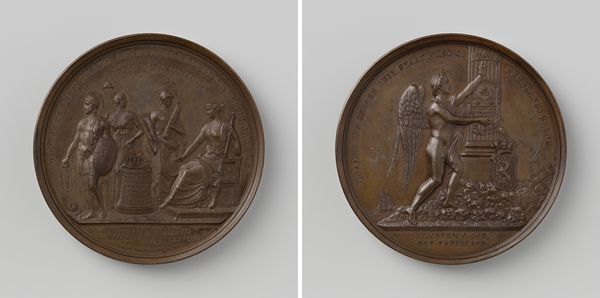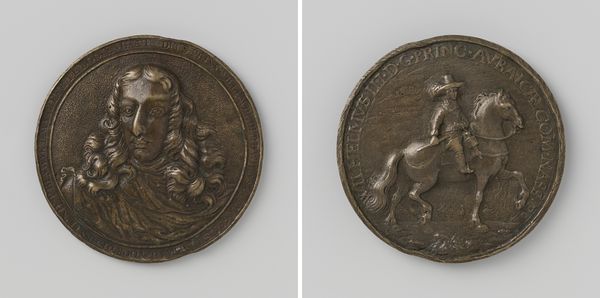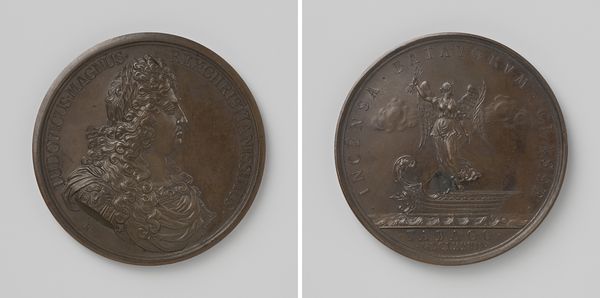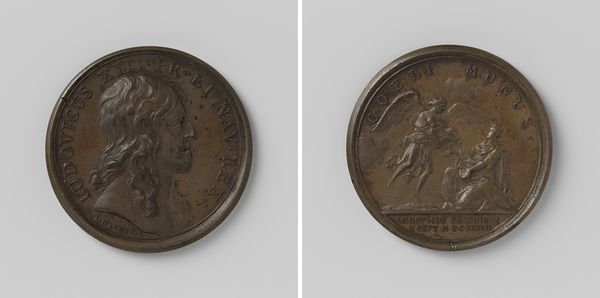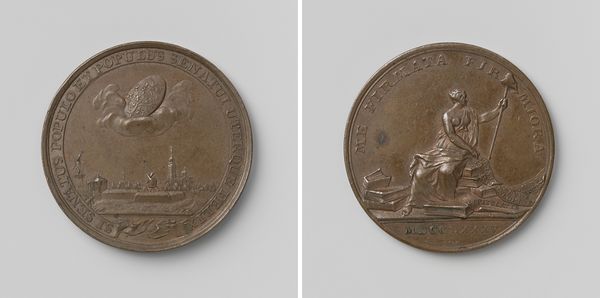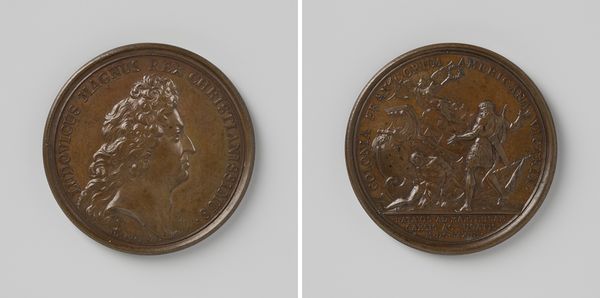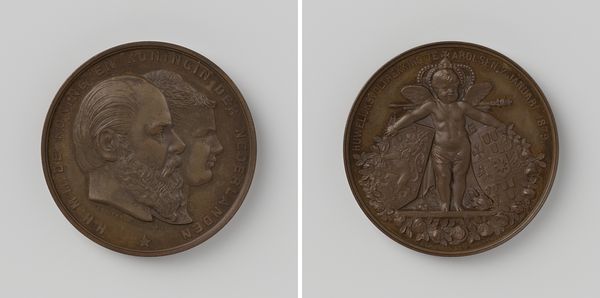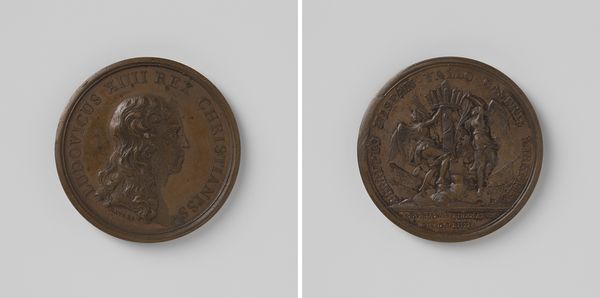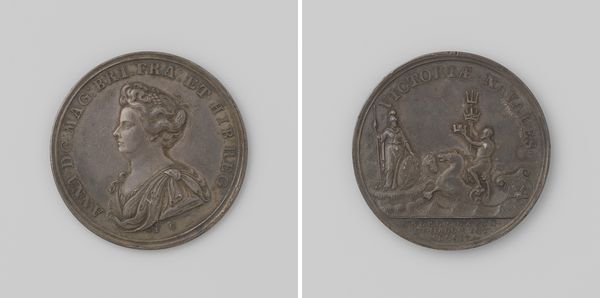
Amsterdam bevrijd van het Franse juk door Alexander I, tsaar van Rusland na de overwinning bij Leipzig 1836
0:00
0:00
relief, bronze, sculpture
#
portrait
#
neoclacissism
#
sculpture
#
relief
#
bronze
#
sculpture
#
history-painting
Dimensions: diameter 6.5 cm, weight 123.93 gr
Copyright: Rijks Museum: Open Domain
Curator: This bronze relief, titled "Amsterdam liberated from the French yoke by Alexander I, Tsar of Russia after the victory at Leipzig," was crafted by A. Kleinkoff in 1836. Editor: It feels very classical at first glance. There's this noble stoicism, especially in the figure wearing the helmet and spear. Yet, it also feels… propagandistic? Curator: Absolutely. Kleinkoff utilizes the neoclassical style, a deliberate choice given the period. The figures, idealized and heroic, reinforce the idea of Alexander I as a liberator. This work embodies the political role art played in shaping public opinion post-Napoleonic Wars. The imagery had a function in creating and reinforcing that particular historical narrative. Editor: The figure with the helmet really stands out. I'm fascinated by the use of classical imagery to represent contemporary events. What is the significance? Curator: The helmeted figure is not Tsar Alexander, but rather a symbol of military power. He looks forward, full of purpose, bearing on his shield scenes from the Napoleonic War and suggesting Russian victory over French. The reverse of the medal references the end of French authority; the conquering figure standing over Amsterdam, and bearing the inscription in Russian reads, For loyalty and courage. The imagery blends the timeless virtues of classical antiquity with very pointed, timely politics. Editor: I notice, though, that the presentation feels quite formal. Was that a typical approach for commemorative works like this? Curator: Quite so. Public monuments and medals of this kind are designed to inspire, and that’s part of how Neoclassicism operated at that time: in terms of public display and in how societies wished to remember this crucial moment in their own history. Editor: Seeing the symbolism laid bare like this helps me understand the power these kinds of works held at the time. I appreciate how it merges classical allegory and current events so self-consciously. Curator: Indeed. And understanding that blend reveals the medal’s deliberate intent to cement a certain narrative in the collective memory of the Dutch people and beyond. It all contributed to Russia’s perception and presentation of its global position.
Comments
No comments
Be the first to comment and join the conversation on the ultimate creative platform.


